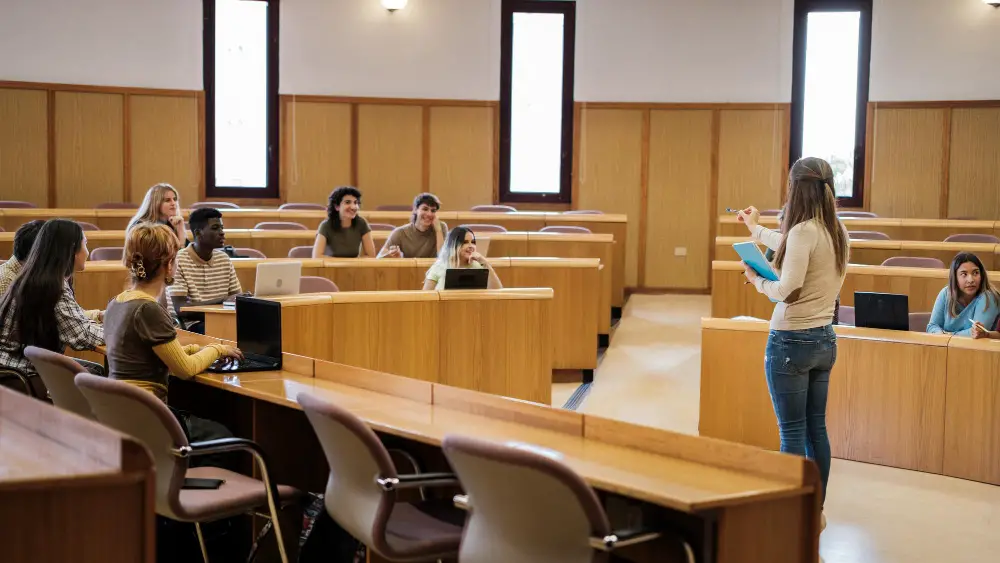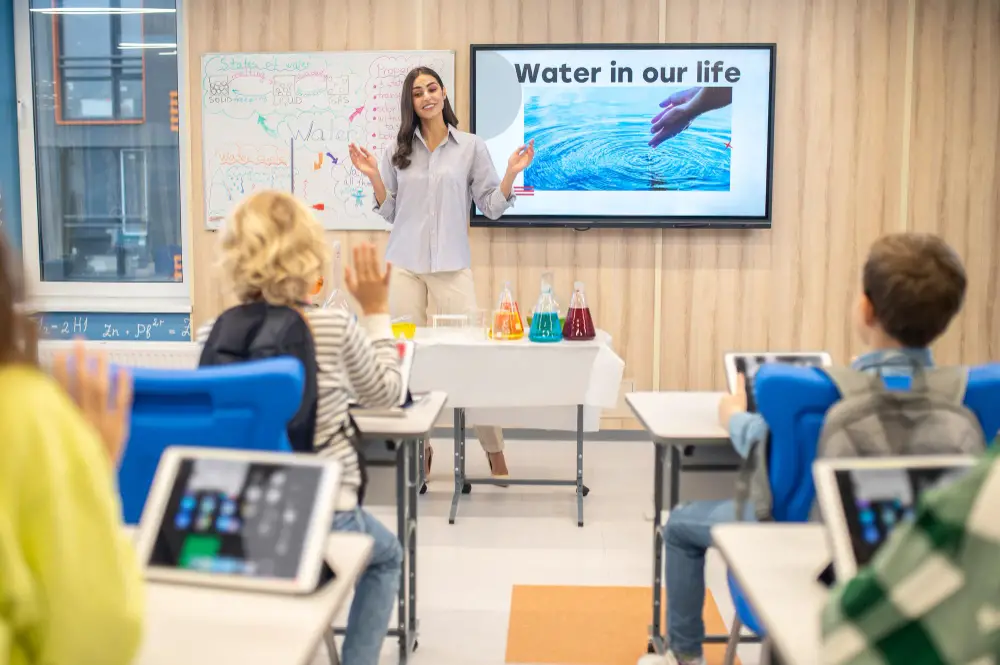Creating a conducive learning environment is more than just having a classroom with desks and a blackboard; it involves fostering an atmosphere that promotes curiosity, creativity, and an eagerness to learn. A positive learning space invites students to engage with the material, encourages collaboration, and adapts to the needs of each individual learner.
In this section, we’ll explore practical strategies that educators can implement to transform their classrooms into dynamic, supportive, and inspiring educational spaces, where every student has the opportunity to thrive academically and personally.
Focus on Cleanliness and Organization

Regular cleaning of the classroom reduces distractions and increases motivation for students to learn. To achieve this goal, schools need to budget for good cleaning services to ensure that the environment is hygienic, safe, and conducive to learning.
Once you implement the right school cleaning services budgeting strategy, you can hire a quality service within your limits and, most importantly, will have a clean and organized classroom in which students will enjoy learning. Apart from cleanliness, teachers should also focus on organizing the classroom space.
This includes having designated areas for different activities, such as reading corners or group workstations. Organizations can also extend to materials and resources, ensuring that they are easily accessible and well-maintained.
Incorporate Flexible Seating Options
Gone are the days of traditional, one-size-fits-all classroom seating arrangements. Today, educators are embracing the concept of flexible seating, which allows students to choose where and how they sit based on their individual preferences and needs.
Standing desks, bean bag chairs, exercise balls, and floor cushions are all examples of flexible seating options that can provide students with a more comfortable and engaging learning experience. Beyond the traditional chair and desk setup, these alternative seating options also promote movement and can help students with different learning styles to better focus on the material.
Integrate Technology Tactfully

Technology is a powerful tool in the classroom but it should be used tactfully. Remember that technology is not a substitute for good teaching; rather, it should enhance and complement the learning experience.
Think of ways to incorporate technology in a meaningful way that supports the curriculum and engages students: interactive presentations, educational apps, online research activities, etc. It’s also important to establish guidelines and expectations for technology use in the classroom to avoid distractions and promote responsible usage.
You can even lock the classroom Wi-Fi during specific times to encourage students to focus on face-to-face interactions and hands-on activities.
Ensure Adequate Lighting and Ventilation
Natural light has been shown to significantly improve mood and cognitive performance, making adequate lighting essential for an optimal learning environment. Windows that allow sunshine to permeate the classroom save on energy costs while providing a lively and inviting atmosphere.
Soft, warm artificial lighting can be used to supplement natural light on overcast days, ensuring that the visual comfort of students is always a priority.
Equally important is ventilation: a well-ventilated space can decrease the transmission of airborne illnesses and increase brain function by circulating fresh air. This can be achieved through the use of fans, open windows, or investing in a high-quality HVAC system. When combined, proper lighting and ventilation can create a comfortable and stimulating environment for students to learn.
Encourage Student Participation and Collaboration
Students are more likely to be engaged when they feel like an active participant in the learning process. Involve them in discussions, debates, and group activities that allow them to share their thoughts, ideas, and perspectives.
Collaborative projects also promote teamwork, problem-solving, and critical thinking skills. By creating opportunities for students to work together, you are fostering a sense of community and support within the classroom.
Display Inspirational and Educational Decor
The design and decor of a classroom can greatly influence the learning environment. Use wall displays, posters, and other educational materials to create an atmosphere that is both inspiring and informative.
In addition to academic materials, consider incorporating inspirational quotes or images that encourage positivity and a growth mindset. These small touches can have a big impact on the overall mood and motivation of students in the classroom.
Create a Resource Corner
Creating a resource corner is an effective way to encourage independence and resourcefulness among students. Dedicate a space within the classroom where students can easily access books, materials, and tools that they might need for their projects and assignments, including a whiteboard or corkboard where students can share and exchange ideas, ask for help, or display their work.
With a designated resource area in place, you are empowering students to take ownership of their learning journey and giving them the tools they need to succeed. Even better, this can also serve as a designated quiet space for students who need a break or some alone time to refocus and recharge.
By implementing the strategies outlined in this guide, educators can significantly enhance the learning environment for their students. From maintaining cleanliness and organization to integrating technology and promoting collaboration, each tactic contributes to a holistic, dynamic, and inclusive educational space.
Creating this type of environment encourages students to explore, engage, and excel. The goal is to impart knowledge and inspire a lifelong passion for learning and discovery. With commitment and creativity, every classroom has the potential to become a nurturing arena for the leaders, innovators, and thinkers of tomorrow.
Related Stories
- How Daylighting Solutions Enhance Well-being and Productivity
- Remodeling Your Kitchen: A Practical Guide to Help You
- Trends and Tips for Designing Your Future Home
- Home Project Suggestions You Will Absolutely Love
- Elevating Your Garage to a Workspace Wonder with These 6-step Guide
Recap
